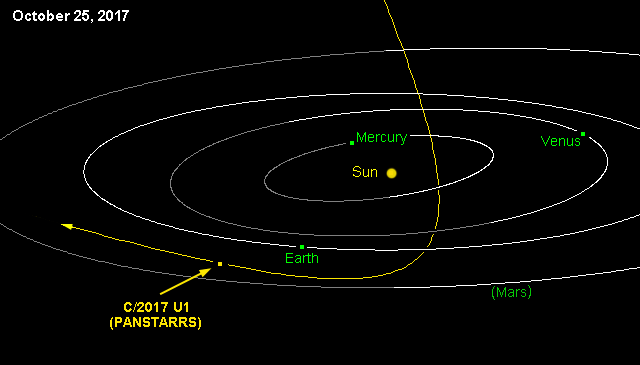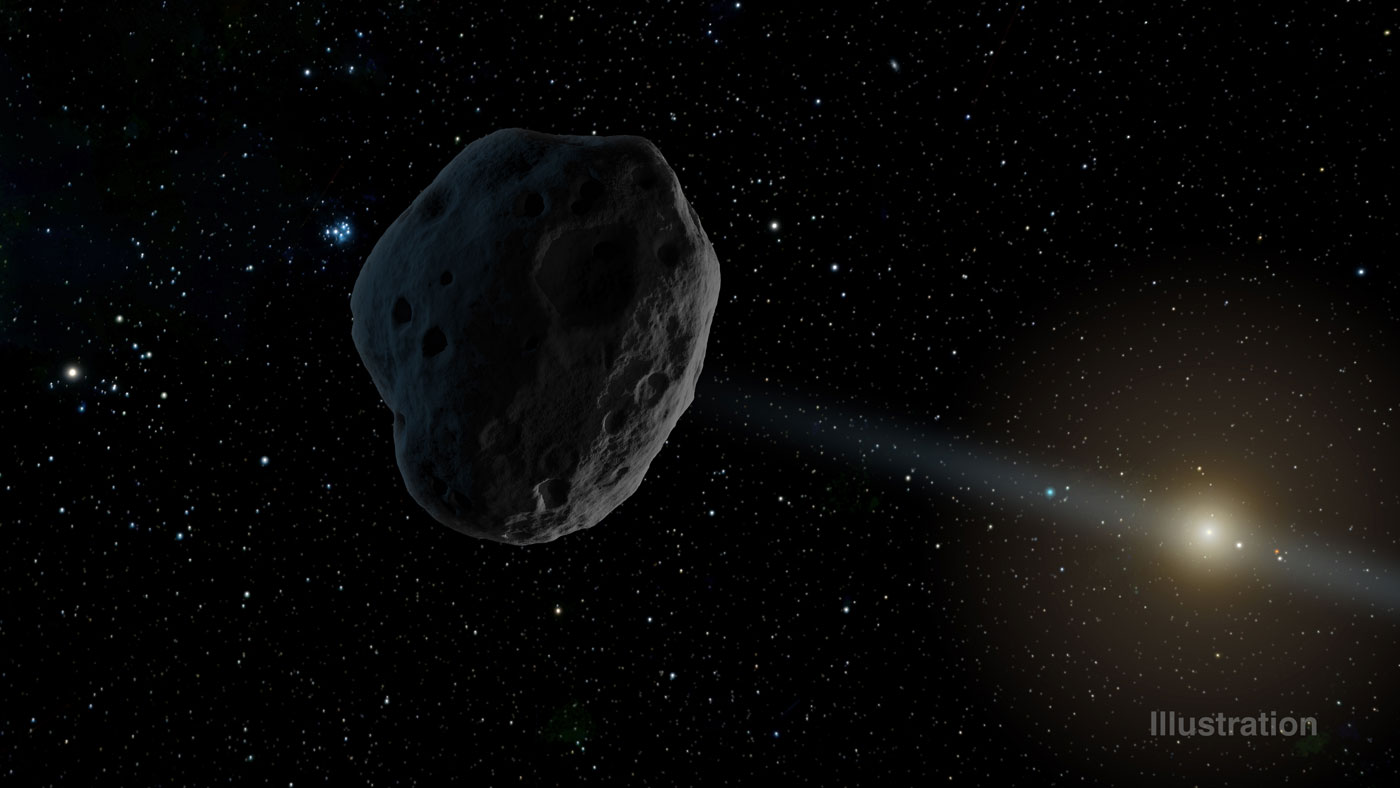Astronomers from the Minor Planet Center sent out an announcement today, hoping for astronomers to do followup observations on the comet C/2017 U1 PANSTARRS. That’s because this strange comet seems to be on a trajectory that originated outside our Solar System. Not just from the Oort Cloud, but from another star.
Is this the first insterstellar comet ever found?

Comets are broken up into two broad categories. There are the short-period comets, the ones that started out in the Kuiper Belt and follow a regular, predictable orbit that brings them close to the Sun on a regular basis. Halley’s Comet is a great example, brightening in the skies every 7 decades or so.
The long-period comets started in the Oort Cloud, a vast collection of comets extending hundreds of astronomical units from the Sun – even out to a light-year away. These comets can take hundreds of thousands or even millions of years to make the long journey down to the inner Solar System, jostled out of their holding pattern by the interaction with a nearby star.
Astronomers make several observations of a comet’s path through the Solar System and then use this to calculate its orbital eccentricity. Zero eccentricity would orbiting the Sun in a circle, while an eccentricity of 1 would be a parabolic trajectory. Halley’s Comet, for example, has an eccentricity of 0.967; somewhere between a circle and a parabola.
From the initial observations, C/2017 U1 has an eccentricity of 1.2, which makes it a hyperbolic trajectory. This means it’s on a trajectory that came from outside the Solar System itself.
Obviously a bold claim like this requires good evidence, which is why the Minor Planet Center is looking for additional observations:
Further observations of this object are very much desired. Unless there are serious problems with much of the astrometry listed below, strongly hyperbolic orbits are the only viable solutions. Although it is probably not too sensible to compute meaningful original and future barycentric orbits, given the very short arc of observations, the orbit below has e ~ 1.2 for both values. If further observations confirm the unusual nature of this orbit, this object may be the first clear case of an interstellar comet.
In a tweet, astronomer Tony Dunn included a simulation he’d made showing the trajectory of C/2017 U1 compared to other comets discovered this year.
Is comet #C2017U1 a visitor from another solar system? Here's a simulation of its current nominal orbit. This simulation will run in your browser.
https://t.co/M1O5an87qk
Watch how fast it moves compared to a few other 2017 comet discoveries. pic.twitter.com/cq7U5eYKOu— Tony Dunn (@tony873004) October 25, 2017
How could a comet like this have gotten to the Solar System? When other stars pass within a few light-years of the Sun, they stir up our Oort Cloud with their gravity. Presumably the Sun does the same to other stars system cometary clouds. Three-body interactions between the comet, planets and the star could kick a comet out into an escape orbit from its star system. Actually, astronomers are arguing about the possible source in the Minor Planet Mailing List group.
Again, Tony Dunn simulated its current trajectory, showing how the comet would have been flying towards us from the Constellation Lyrae, which contains the bright star Vega. Did it come from Vega? We’ll probably never know.
Did it come from Vega?
Here are 2 more simulations of #C2017U1. They will run in your browser.
A view of the comet as it approaches from the constellation Lyra:https://t.co/dCbPpNVPHa
A view of the Sun from the comet:https://t.co/ARve4vwTuS pic.twitter.com/TsqGwCR82R
— Tony Dunn (@tony873004) October 25, 2017
C/2017 U1 was first discovered on October 18, 2017 from the Panoramic Survey Telescope and Rapid Response System (Pan-STARRS) located at the Haleakala Observatory in Hawaii. The purpose of this automated telescope is to scan the sky night after night, searching for moving and variable objects. It’s one of the most prolific comet hunters in the world, which is why you probably see so many comets named after it.
The comet was about 30 million kilometers (19 million miles) from Earth, and only 6 days of observations have been made. It was traveling at a velocity of 26 km/s, much faster than the escape velocity of the Solar System.
We now know that it passed its closest point to the Sun on September 9, 2017, and is well on its way back out of the Solar System.
Will this turn out to be the first interstellar comet? It’s already as dim as magnitude 21, so astronomers will need to work quickly to gather more observations before it fades from sight entirely.
Source: Minor Planet Center


I’m following this on Twitter, and it now looks like the object is not a comet at all: http://www.minorplanetcenter.net/mpec/K17/K17UI3.html
It’s also, unfortunately, probably not interstellar either. 🙁
https://twitter.com/astrokiwi/status/923230754011828224
I got a little excited there for a while.
And the cynic in me is wondering how long it will take Brown and Batygin to credit P9 for this asteroid’s funny trajectory.
An excellent article, but this statement is not correct: “Halley’s Comet is a great example, brightening in the skies every 4 decades or so.”
Historical observations confirm that Halley’s Comet has maintained an orbital period of 74-79 years since 240 B.C. These days, it can be observed by the Hubble telescope or the VLT at any point in its orbit, but Halley’s Comet only begins to brighten significantly about 2-3 years before its closest approach to the sun (perihelion). Because the orbit (and the comet, eroding over time) are highly variable, this is subject to change.
Objects on a hyperbolic trajectory are the wild cards of Earth’s planetary defense.
Did we miss our opportunity to Rendezvous with Rama?
Seriously, though, it would have been a great chance to check out a possible interstellar traveler.